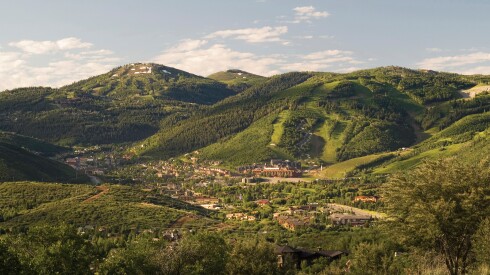On August 30, the National Park Service (NPS) announced a new policy regarding the use of e-bikes in the national parks in compliance with an order signed by U.S. Secretary of the Interior David Bernhardt. The new policy allows visitors to use e-bikes—low-speed electric bicycles with battery-powered assistance—everywhere traditional bicycles are allowed.
The order—which extends to other Department of the Interior (DOI) agencies, including the Bureau of Land Management and the Fish and Wildlife Service—intends to increase recreational opportunities to all visitors on public lands and particularly to those with physical limitations. Agencies had 30 days to begin enacting their new policies, and already parks across the country, including Yellowstone, Grand Teton, Arches, Canyonlands, and Acadia, have begun to make changes. However, many conservation and outdoor recreation groups have concerns about the change.
Expanding access for bikes means expanding access for people
Recently e-bikes (sometimes called e-assist bikes) have seen a dramatic increase in popularity in the United States: In 2018, bike company Specialized saw sales of e-bikes almost double from the previous year, and biking tour operators such as Trek Travel and DuVine have noted that they’re seeing more and more guests interested in using e-bikes. Part of the allure of these machines is that they allow users of different fitness and experience levels to enjoy the same terrain together.
National Park Service deputy director P. Daniel Smith said in a press release that e-bikes “make bicycle travel easier and more efficient, and they provide an option for people who want to ride a bicycle but might not otherwise do so because of physical fitness, age, disability, or convenience, especially at high altitudes or in hilly or strenuous terrain.” E-bikes also support active modes of transportation and can even help combat traffic congestion and reduce the demand for parking spaces in popular areas of certain parks.
Jen Braaksma, marketing manager at Trek Travel, says the change creates an exciting opportunity for bike tour operators: “Some national parks now allow the use of e-bikes for commercial tour operators like us, but it’s up to each park. We work closely with our park contacts in Yellowstone and Tetons, who allow use of e-bikes, to ensure our trips meet their regulations. This opportunity allows several guests to experience the beauty of the national parks with the convenience and fun of an electric-assist Trek bike.”
So what’s the problem?
Not all e-bikes are created the same. There are three classes of e-bike:
- Class 1 e-bikes provide minimal assistance only when the rider is pedaling and can reach speeds of 20 miles per hour.
- Class 2 e-bikes can also reach a maximum speed of 20 miles per hour but have a throttle that provides power even when the rider isn’t pedaling.
- Class 3 e-bikes have no throttle but can reach speeds of 28 miles per hour.
The NPS policy—and the Interior Secretary’s order—treats all three of these e-bikes the same as it does a traditional, unmotorized bike. That means they can all travel the same trails, no matter how crowded or how sensitive the surrounding environment is. No one wants to be strolling along a sunny park path with family and turn a corner to see a bike speeding from the other direction at nearly 30 miles per hour.
For many park visitors, disruption of peace and quiet is the main concern. In Acadia National Park, opponents to the new policy point out that the park’s beloved carriage roads were created by the Rockefellers, who specifically didn’t want motorized vehicles using them.
Things get even more contentious in the backcountry, where trails are carefully designed with horses, hikers, and mountain bikers in mind—and not anything faster. Because of the popularity of e-bikes, land managers of many of these wilderness areas had already studied the impacts of e-bikes in these spaces and implemented their own regulations accordingly, but the federal policy changes supersede the local ones.
An electric future
In some national parks, the new policy won’t change much for visitors exploring on foot. In Dinosaur National Monument, for example, e-bikes and bikes are allowed on all park roads, but trails still remain the domain of hikers only. And in Mount Rainier National Park, e-bikes and bikes are allowed on roads, as well as trails open only to bikes. But park superintendents still have the power to limit, restrict, or impose conditions on bike and e-bike use to ensure visitor safety and the protection of natural resources, so other parks will see more restrictive e-bike regulations. Ohio’s Cuyahoga Valley National Park, for example, has prohibited Class 3 e-bikes altogether and has announced a speed limit for all bikes. And in Acadia, while Class 1 e-bikes can now travel the carriage roads, Class 2 and Class 3 e-bikes must stay on the regular roads.
As parks continue to announce their individual e-bike policy changes (and as we begin to see the effects of expanded e-bike acces), the NPS recommends that visitors check the websites of the park they’re visiting to see up-to-date information.
>>Next: World’s Largest Private Sequoia Grove Set to Become Public Land











